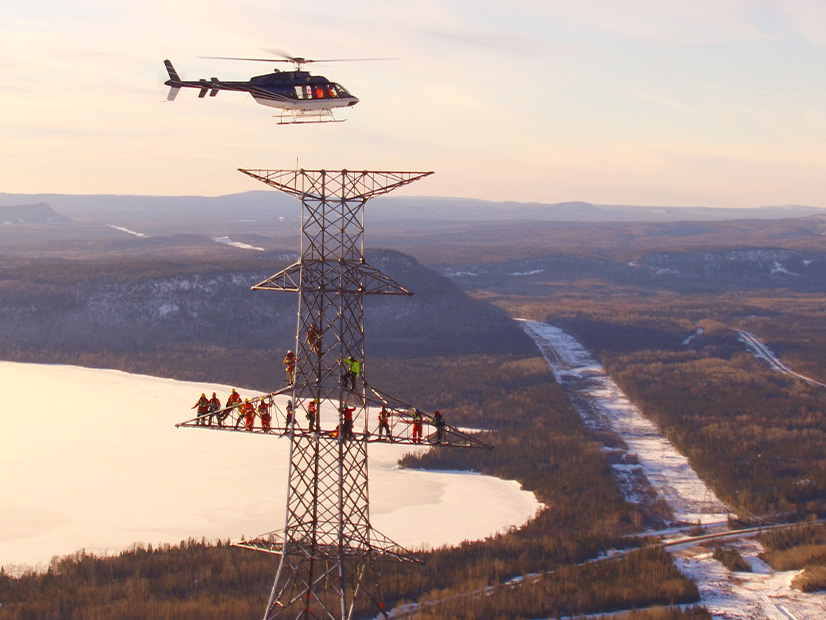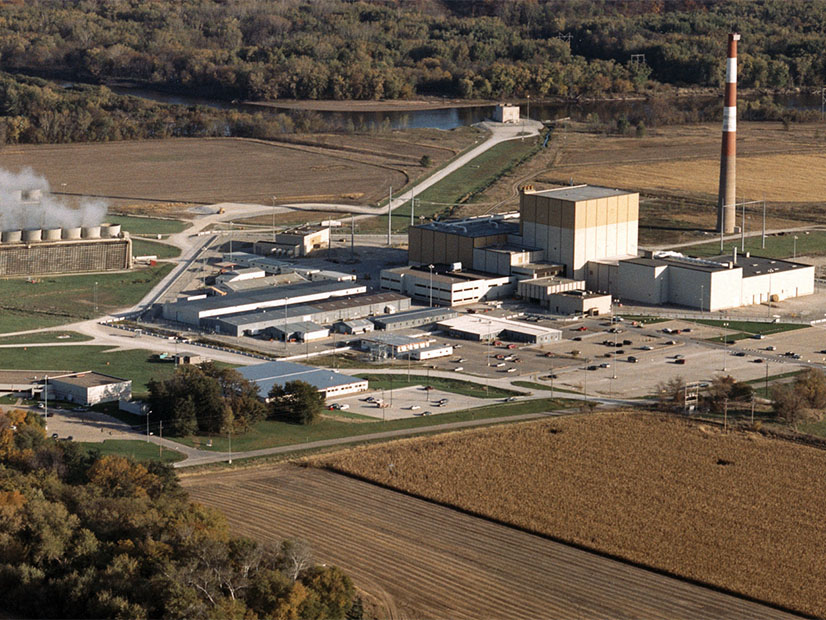
NextEra Energy reported deals for 3 GW of new renewables with its third-quarter financials and said it has reached a framework agreement totaling 10.5 GW with two major corporations.
CEO John Ketchum also indicated the company is interested in recommissioning an Iowa nuclear reactor shut down after storm damage in 2020. Customers, particularly data centers, are showing keen interest in the emissions-free power it would supply, he said.
The third-quarter report issued Oct. 23 was another strong and confident assessment from one of the nation’s leading renewables developers and utility operators.
It was the second quarter in a row that NextEra Energy added 3 GW of new renewables and storage to its backlog. Ketchum said if NextEra achieves only midpoint expectations, it will more than double its renewable generation portfolio from 38 GW today to 81 GW by the end of 2027.
Data centers’ massive power needs are well known, Ketchum said, but the demand growth spreads far beyond them.
The two Fortune 50 firms that struck the 10.5 GW framework agreements with NextEra are not data center operators and are not even part of the technology sector. NextEra will not identify them at this stage but said they are building facilities that will need power, and they would prefer to meet those needs with low-carbon resources.
“Cost, capacity and speed are the three big issues that need to be addressed in meeting power demand, and as we have demonstrated in Florida, a mix of new renewables, storage and gas generation is the solution,” Ketchum said.
He added: “When it comes to economics, renewables and storage are the lowest-cost generation and capacity resource for customers in many parts of the U.S. We believe new wind is up to 60% cheaper and new solar up to 40% cheaper than new gas-powered generation, and that’s on a nearly firm basis when paired with a four-hour battery.”
Ketchum’s remarks on NextEra’s Duane Arnold nuclear plant in Iowa had a different tone than those just three months earlier. During the second-quarter earnings conference call in July, he said the company would consider a restart only under the right circumstances. (See NextEra Reports Continued Growth in Renewables.)
Now the company is “very interested.”
The problem with nuclear is that it essentially is a future-tense solution, Ketchum said. New technology will not come online at scale for at least a decade, he predicted, and existing technology is famously slow and expensive to build. So nuclear is not a short-term solution — unless one is referring to Duane Arnold and just a few other idled plants that could be brought back online. (Work is underway to recommission two others in Michigan and Pennsylvania.)
Duane Arnold is a half-century old, but it is a simpler boiling water design and can be refurbished in less time and at lower cost, Ketchum said.
Unlike other nuclear proponents, NextEra is not jumping on the bandwagon for small modular reactors (SMRs) just yet, and probably will not any time soon.
“We have been following SMRs for a very long time,” Ketchum said. “We actually advise a couple of Fortune 100 companies on SMRs today.”
NextEra’s assessment: Only a few of the nearly one dozen manufacturers trying to bring SMRs to market have the capitalization to make it happen in the next several years; each design will be an unproven first-of-a-kind technology that carries “a ton of risk”; they initially will be too expensive to compete with a mix of renewables, storage and gas; and an entire supply chain must be built to fuel them.
“That’s why we’re just not bullish on SMRs,” Ketchum told an analyst during the Oct. 23 conference call. “We think it’s kind of an end-of-the-next-decade alternative.”
NextEra Energy’s third quarter net income per share was up 50% on a GAAP basis from the same period in 2023 and up 9.6% on an adjusted basis. The company projects continued annual growth in earnings per share through 2027 and expects to increase its dividend by about 10% per year at least through 2026.
NextEra Energy’s third quarter results are based mainly on the performance of its subsidiaries Florida Power and Light, the nation’s largest utility by customer count, and NextEra Energy Resources, the world’s largest generator of wind and solar power.
NextEra Energy Partners, a separate business that shares corporate leadership with NextEra Energy, posted a net loss of $40 million for the third quarter of 2024, which compares with a net income of $53 million in the same quarter of 2023.
Chief Financial Officer Brian Bolster said NextEra Energy Partners will complete a review over the next three months but added that it has many potential avenues of growth, given the demand for electricity.
NextEra Energy’s stock closed 1.5% higher on a day of widespread losses across the major U.S. markets, while NextEra Energy Partners’ stock was down 16.3%.




